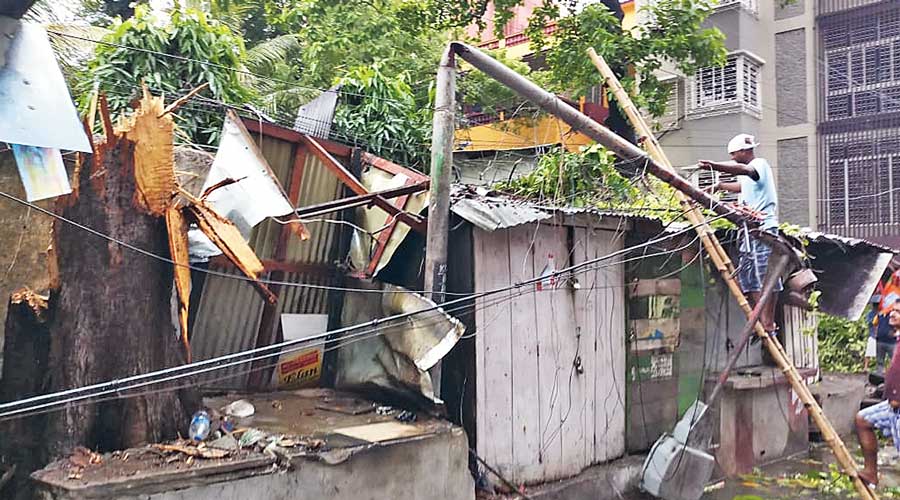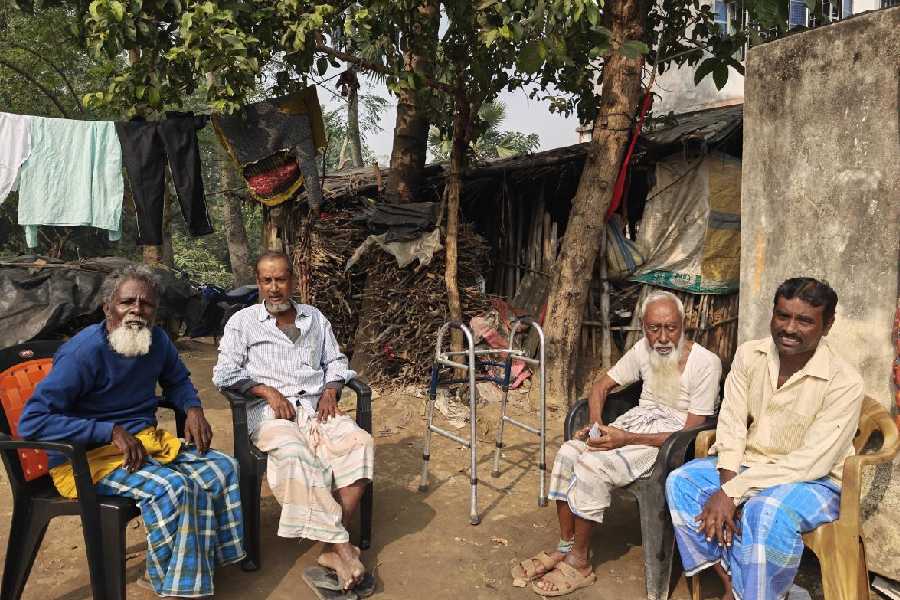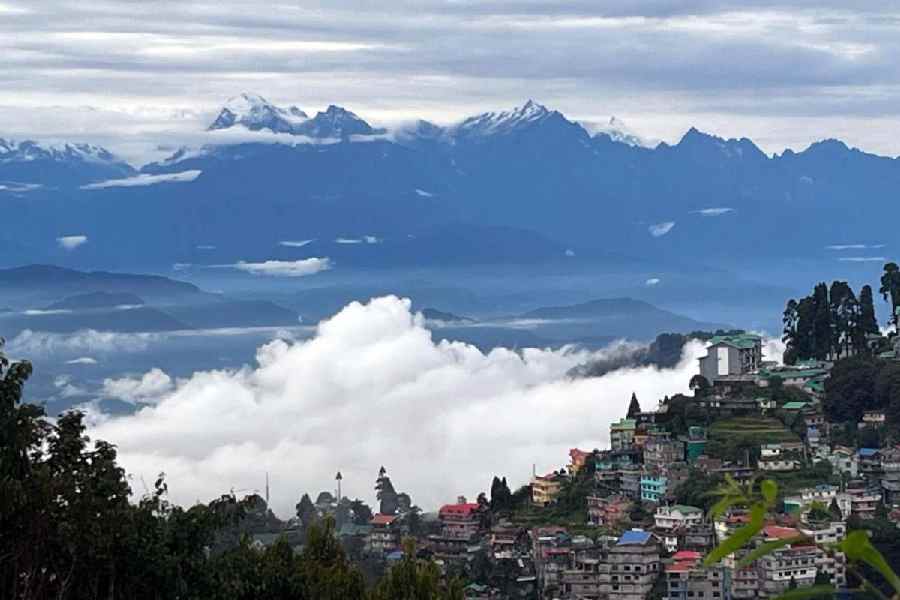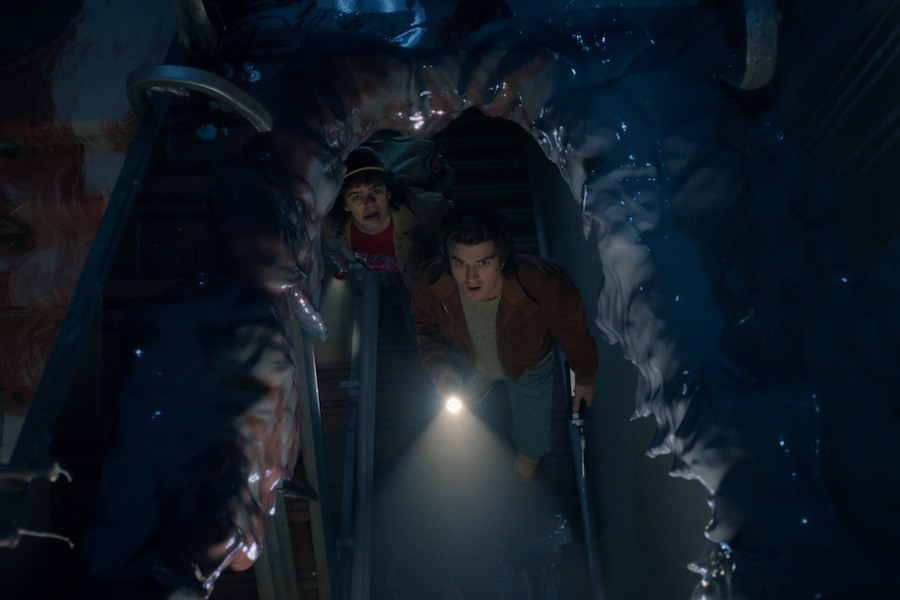25-year-old kadam tree broke off from its trunk on a New Alipore footpath early on Thursday and crashed into a lamp post, several overhead cables and two roadside sheds in which some street dwellers were sleeping.
The men heard the sound of the tree coming down and jumped out of its way seconds before it crashed into the sheds around 2.30am on Thursday.
Trees continuing to fall in the city with or without a storm is a grim pointer to how unscientific Calcutta’s kerbside plantation is and how uncared for these trees are.
Residents of New Alipore’s J Block said the kadam tree had a major cavity in its trunk, possibly because of rats nesting inside it. A few seconds of gusty wind was enough to dislodge it.
“Luckily, no one was injured,” said Ashok Dey, who lives close by.

workers clear torn wires from the road. Telegraph picture
Residents of the area informed police around 6am. A team comprising members of CESC, the disaster management group and personnel from the local police station reached the spot.
“CESC men neutralised the snapped cables before the DMG started cutting the tree,” Dey said.
Debasish Kumar, a member of the board of administrators of the Calcutta Municipal Corporation who is in charge of parks and gardens, said more than 30 trees, big and small, fell in the city in the last 24 hours.
“Most of these trees had weak roots from last year because of Amphan. The primary cause (of trees getting uprooted) is unscientific plantation. One should never plant trees like krishnachura and radhachura on the footpath,” Kumar said.

A part of the tree kept along the road. Telegraph picture
Most of the trees that were damaged this time were krishnachura and radhachura.
“Neem and debdaru are better or plants that would not grow beyond 10ft. Trees that can damage life and property if they crash should not be planted on footpaths,” Kumar said.
Both krishnachura and radhachura are fast growing, soft-wood trees that are vulnerable and unfit for roadside plantation, said a naturalist. “For footpath plantation, slow-growing hard-wood evergreen trees are always advisable.”
Neem is a relatively slow-growing hard-wood tree but it is not evergreen and sheds leaves in winter. Debdaru is more of an ornamental tree when it comes to avenue plantation because it does not have a canopy, which is one of the criteria for avenue plantation, the naturalist said.
“Big trees need a radius of at least two metres around the trunks for their roots to develop properly. Without that space, the roots cannot grow properly and the foundation of the tree gets weak,” said Arjan Basu Roy, who runs an NGO that works for the restoration of uprooted trees.
“Unfortunately, we start caring about trees only before cyclones while ideally, they should be trimmed and taken care of months before the cyclone season,” he said.
On Thursday, there were reports of more trees getting tilted in a dangerous way in Alipore and Tollygunge. One was reported on Burdwan Road near the Diamond Harbour Road crossing in Alipore and another on Uttam Kumar Sarani near the Metro Railway shed in Tollygunge.
No injuries were reported because of trees or branches falling, the police said.
On Wednesday, a fully-grown krishnachura tree on a footpath on Tollygunge’s Pratapaditya Road got uprooted and crashed on the wall of a two-storey building across the road.










